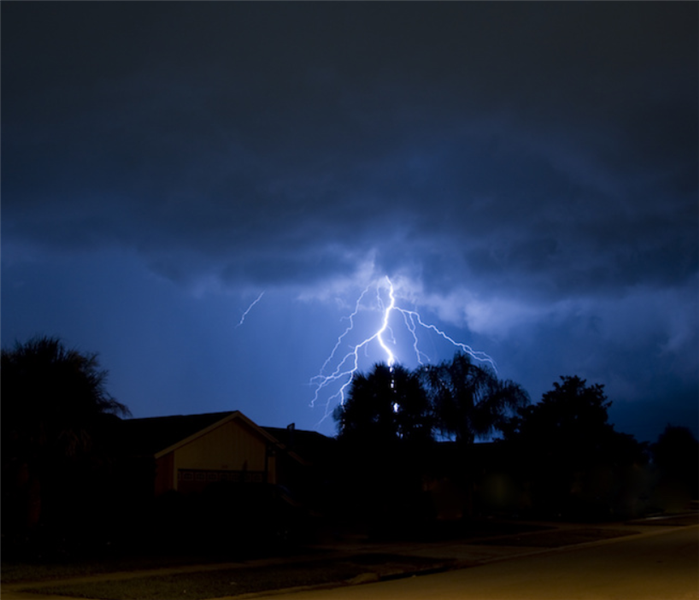Storm damage in Long Beach, CA
7/9/2020 (Permalink)
When you are out enjoying gorgeous summer weather, having the day interrupted by thunderstorms is quite an inconvenience—but it can be extremely dangerous, as well. Any thunderstorm, even the quick ones associated with summer heat, can cause serious damages to those in their path.
Because these storms often happen with little notice, we have assembled some tips to help you be storm-smart no matter where you are.
Be Storm-Smart No Matter Where You Are
Know your options for shelter. If it is clear that a storm is on the way and you are still safely at home, staying put until the threat passes is the safest thing to do. However, the nature of these storms do not always lend themselves to this. If you are caught out and about, your car can be used for shelter to protect you—simply cut off the engine and avoid touching metals in the vehicle.
Practice electrical safety. If lightning strikes the building you are in, the charge will typically travel through the electrical wires on its way to the ground, which can lead to a power surge. Power surges can ruin electronics and lead to dangerous sparking that can cause fires. The best thing to do is unplug everything when you know a storm is incoming, but installing surge protectors at home and at work can protect your items when this is not a possibility.
Avoid direct contact with concrete. If you are seeking shelter in a structure, concrete buildings might seem like the safest place to be. It is important to realize that these, too, can pose a threat, as metals within the concrete can still transmit an electrical charge if lightning strikes the building. If you are in a concrete building, be sure to avoid any direct contact with floors and walls to avoid harm.
Stay indoors for at least 30 minutes. When your day is interrupted by a sudden storm, it is normal to be antsy to get back outside. It is important to follow officials’ recommendations, however—because lightning is able to travel distances of up to 25 miles in order to strike, wait 30 minutes from the last clap of thunder before you head back out.
If your home sustains damage due to a storm, you can count on us to help. Contact us at any hour to learn more about our storm restoration process.

 24/7 Emergency Service
24/7 Emergency Service
